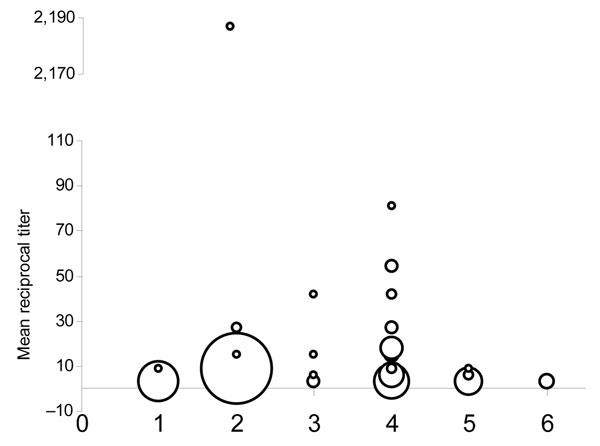Volume 14, Number 6—June 2008
Dispatch
Antibodies against Lagos Bat Virus in Megachiroptera from West Africa
Figure 1

Figure 1. Antibody titers to Lagos bat virus (LBV) in 6 species of fruit bat in Ghana. An LBV-specific modified fluorescent antibody neutralization test was used to determine the level of antibody in bats; it used two 3-fold serial dilutions and derived a mean dilution at which the bats neutralized LBV. Bats with mean titers >9 were considered positive. The circle size represents the number of bats tested. 1, Epomops franqueti; 2, Epomophorus gambianus; 3, Epomops buettikoferi; 4, Eidolon helvum; 5, Hypsignathus monstrosus; 6, Nanonycteris veldkampii.
Page created: July 09, 2010
Page updated: July 09, 2010
Page reviewed: July 09, 2010
The conclusions, findings, and opinions expressed by authors contributing to this journal do not necessarily reflect the official position of the U.S. Department of Health and Human Services, the Public Health Service, the Centers for Disease Control and Prevention, or the authors' affiliated institutions. Use of trade names is for identification only and does not imply endorsement by any of the groups named above.